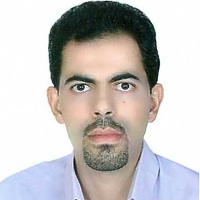Production of Polycaprolactone / Gelatin / Polydimethylsiloxane Hybrid Nanofibers with Different Morphologies as Potential Scaffolds for Tissue Engineering
Nowadays, research in the field of tissue engineering has increased widely. Scaffold production is important for regulation of the morphology of the tissues. The purpose of producing these scaffold is to make a uterine endometrial scaffold. Therefore, the fibers with different diameters and morphology were synthesized to produce an optimal scaffold.
In this study, electrospun hybrid fiber scaffolds made of polycaprolactone (PCL), gelatin (G) and polydimethylsiloxane (PDMS) with different optimal ratios and different morphologies were produced by electrospinning collector changing for tissue engineering applications. Physicochemical properties of fabricated scaffolds were evaluated using scanning electron microscopy, the immersion of scaffold samples, attenuated total reflectance Fourier transform infrared and tensile strength analysis. Cytotoxicity analysis of scaffolds and human foreskin fibroblasts on the scaffolds were assessed by 3-(4, 5-dimethylthiazoyl-2-yl) 2, 5-diphenyltetrazolium bromide assay. Proliferation and growth of the cells on the scaffolds were evaluated by hematoxylin-eosin staining.
Layer-by-layer scaffold, cotton-like scaffold, mixed cell scaffold, flat scaffold and control sample showed reduced cell growth and proliferation. Therefore, layer-by-layer scaffold and cotton-like scaffolds are the best options for cell growth and proliferation. Also, the mechanical properties of layer-by-layer scaffold and cotton-like scaffolds were better than those of other scaffolds. The cotton-like scaffold was better than other scaffolds in terms of porosity and was suitable for cell penetration into the scaffold. Although layer-by-layer and cell-mixed scaffolds showed suitable cell penetration due to placement of the cells among the fibers.
The morphology and characteristics of the PCL / G / PDMS hybrid scaffolds are adjustable by inducing change in the electrospinning collector. The PCL/ G/ PDMS hybrid scaffolds characteristics showed that these scaffolds were suitable for tissue engineering applications especially engineering of elastic tissues.
- حق عضویت دریافتی صرف حمایت از نشریات عضو و نگهداری، تکمیل و توسعه مگیران میشود.
- پرداخت حق اشتراک و دانلود مقالات اجازه بازنشر آن در سایر رسانههای چاپی و دیجیتال را به کاربر نمیدهد.


